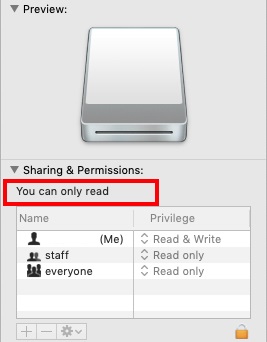

The default file system for Windows is NTFS (New Technology File System). exFAT – a newer file system optimized for flash devices and has improved performance overFAT32.

#PC READING A HDD FOR MAC MAC OS#
The resulting FAT32 file system will be compatible with all versions of Mac OS X, and Windows including Windows 10 back to 95. Once you have done with formatting, your external hard drive will be able to write and read files from both a PC and Mac. Many still choose FAT32 over exFAT despite its slower performance, as it’s also compatible with Linux Os and is supported on many gaming consoles. If you have to work with large video clips, games or any other kind of massive files, FAT32 may not be the best choice. FAT32 has a maximum 4GB file size limit, but exFAT can work with files as large as 16EB, that’s more than you will ever need. However, each of these filesystems has their own pros and cons. You can format your external hard drive in both – exFAT and FAT32. Just keep in mind if you want to use your drive also for OS X’s Time Machine backups, we advise you to format your drive through Mac because there is an additional step to make drive compatible with “Time Machine Backups”. And you can only do this with exFAT as with FAT32 Mac OS X’s Time Machine backup won’t work. You can format your external hard drive from either the PC or Mac.

In the resulut, your external hard drive will work just fine with Mac and Windows. However there is a simple solution – you can format the drive to FAT32 or exFAT that performs better than FAT32. Windows uses NTFS, and Mac OS uses HFS, these file systems are not compatible with each other. Often switch between a Mac and PC? Want to use one USB flash storage device for both? The thing is that by default, these platforms use different file systems – discs are formatted differently.


 0 kommentar(er)
0 kommentar(er)
